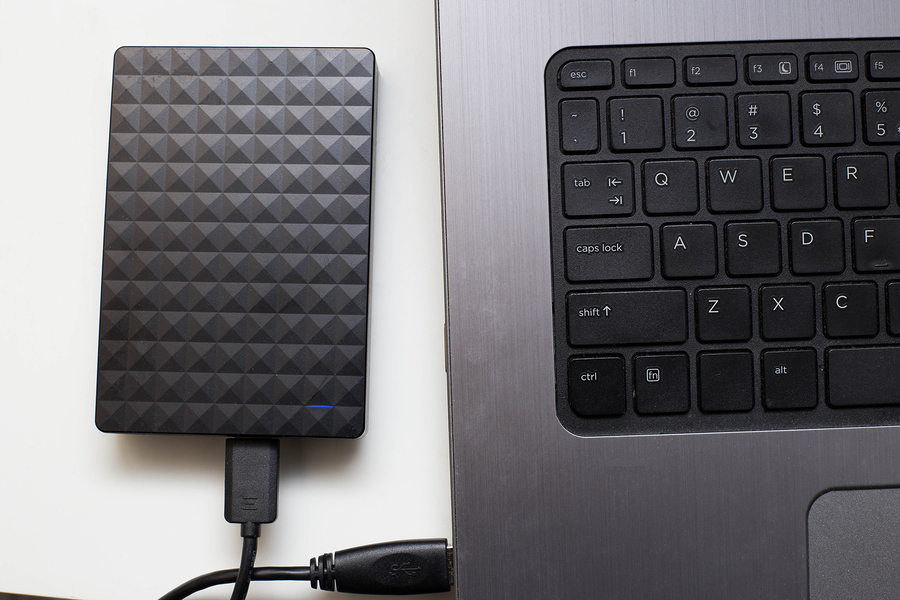In this article:
If you’re a photographer, business owner, or even a student, sooner or later files on your PC will start filling up the internal hard drive of your machine. The majority of computer and laptop users store hundreds of images, videos, and other documents on their PC. Initially, the internal hard drive is sufficient to hold all the data but as we keep adding new data, the need to back up and store additional files becomes unavoidable. You may need an additional data storage device for backing up your data or transferring files between devices. Whatever reason you may have, it’s crucial to find a reliable data storage solution to meet your specific needs.

Over the years, data storage technology has evolved from floppy disks and CDs to external HDDs, USB flash drives, and the latest external SSDs. When it comes to data backup, users have got multiple options today. With technological advancements, external portable storage devices have become more compact and offer higher capacities, faster transfer speeds, and better reliability. So, whether you’re running out of storage space or looking to upgrade to a better hard drive, it’s easy to find a device that meets your needs and suits your budget. However, the availability of plenteous options also makes it easy to get confused.
For most users, the biggest dilemma is to choose between an external HDD and an SSD. If you also need a device to gain extra storage space then you might wonder whether to pick an SSD or HDD. So, let’s find out the differences between HDDs and SSDs in terms of speed, capacity, cost, and lifespan.
Difference between External SSD and HDD
Unlike internal drives, an external hard drive or SSD is plugged directly into a desktop or laptop to get additional storage space. Besides storing data, the external HDD and SDDs can also be connected to different devices for transferring files. Both external SSD and hard drives may look similar in appearance but their technology is different and they store data in different ways. Read further to know the difference between the two devices.
Hard Disk Drive
A hard disk drive, known as an HDD, uses magnetism to store data. A typical hard disk drive consists of many small, moving parts such as magnetic heads, spindles, and spinning platters. All HDDs use a mechanical arm to move and read data. It relies on the mechanical movement of these parts to acquire information, which makes them slower and more prone to damage than the SSD. The spinning hard drives work on the non-volatile storage and use an I/O controller and firmware. To read or write data, the head hovers above the rotating magnetically-sensitive platters. The spinning speed of platters determines the read/write rates. The higher the speed, the faster the hard drive performs. Also, more platters inside the drive mean more storage capacity.
SSD (Solid-State Drive)
Similar to traditional hard disk drives, solid-state drives also perform the same basic function of storing data. However, these are more advanced drives that store information on flash memory that consists of individual memory cells. It is electronic storage that has no moving parts and stores data in microchips. SSDs work on flash memory and the lack of spinning parts make these drive more durable and energy-efficient. SSDs are somewhat similar to USB drives but larger in size. Both the devices use the same NAND technology to store data. It stores data on interconnected flash memory chips that retain the data even when there’s no power.
External SSD vs. External HDD
Now as we know the basic difference between the two types of drives. The biggest question arises- which one is right for data backup. When looking for an external data storage device. You need to consider a few things- the amount of data you need to store, speed considerations, compatibility, durability, and of course, your budget.
Who doesn’t like a high-capacity external hard drive with blazing-fast speed? It can be tempting to get the largest available SSD in the market but do you actually need that much space? Also, you may feel like getting a super-fast external SSD but possibly that device is out of your budget. So, it means that the data storage device you choose largely depends on your specific needs. If you simply need a low-cost device to maintain data backup then an external hard drive can be right for you. Hard drives come in various storage capacities and often have more space than an SSD. However, even if HDDs are more economical and have higher capacities. These devices are more at risk of failure and data loss.
As compared to HDDs, external SSDs are more robust and smaller in size. The SSD technology makes these drives more robust and easy to use. If your budget allows, devices like WD My Passport SSD, Seagate SSDs, or LaCie rugged SSD, are worth the investment. These SSDs are available in smaller form factors, with higher transmission speeds, less operating noise, and shock resistance. Both SSDs and HDDs do the same job- boot your system and store your data. However, SSDs work much faster and keep your data safe in the event of minor accidents. Also, SSDs don’t have moving parts which make them noise-proof.
To put this in similar words, an external HDD is like a bus that may move slowly but carry several passengers. An external SSD, on the other hand, is similar to a sports car- super fast but carries only limited passengers. Also, the cost of traveling on a bus is a fraction of buying a sports car. So, if you are willing to spend the extra bucks for super fast speed and more reliable performance, then SSD is the right pick for you.